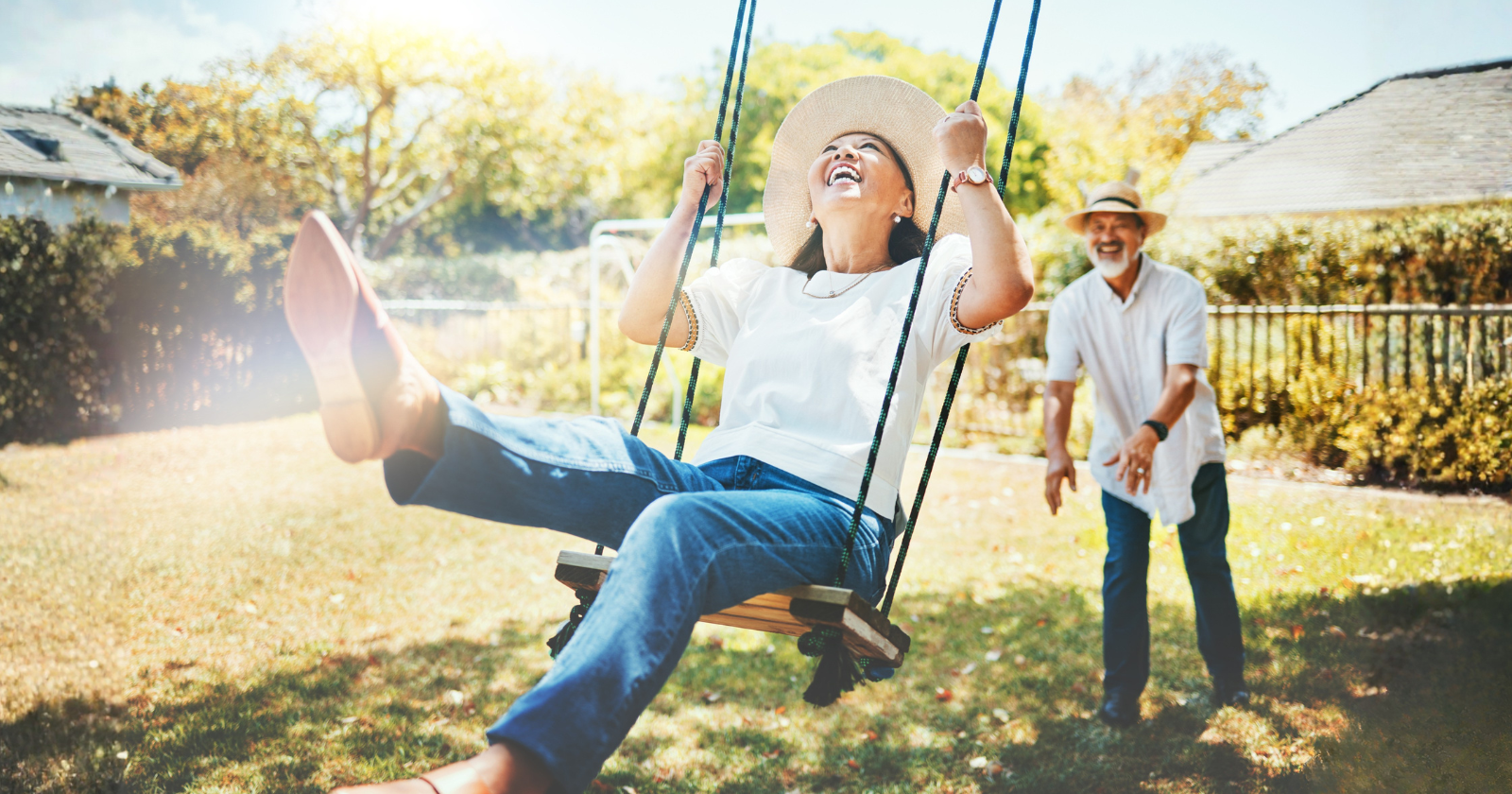Remember when happiness was simple?
When a sunny afternoon meant grabbing your bike and riding until dinner. When boredom led to the best adventures. When you could spend hours doing absolutely nothing productive and feel completely satisfied.
Somewhere between childhood and adulthood, most of us lost that. We traded simple pleasures for complex responsibilities. We convinced ourselves that happiness requires achievement, success, the right career, the perfect relationship, enough money in the bank.
But I’ve been thinking lately about the things that made me genuinely happy as a kid. And I’ve realized something: those activities weren’t just fun because I was young and carefree. They were fun because they tapped into something real, something we still need as adults but have completely abandoned.
So here are the childhood activities worth bringing back, and why they might be exactly what you need right now:
1. Playing outside with no destination or goal
Kids don’t go outside to exercise or get fresh air or hit their step count. They go outside to see what happens.
As adults, we’ve turned everything into an agenda. A walk becomes a workout. Time in nature becomes an Instagram opportunity. Even relaxation becomes something we schedule and optimize.
But when I was a kid, going outside meant wandering around the neighborhood, climbing trees, poking at bugs, seeing what was interesting. No fitness tracker. No destination. Just being outside because being outside felt good.
I started doing this again a few months ago. Just going outside and wandering with no plan. Sometimes I end up at the park. Sometimes I walk down streets I’ve never explored. Sometimes I just sit on a bench and watch people.
And you know what? It feels amazing. There’s something about moving through the world without a purpose that makes you actually notice the world. You see things. You think about things. Your brain relaxes in a way it never does when you’re trying to accomplish something.
Try it. Go outside this weekend with zero plan. No route, no goal, no reason beyond “I want to be outside.” See where you end up.
2. Making things with your hands
Remember arts and crafts time? Finger painting, building with blocks, making stuff out of cardboard boxes and duct tape?
Kids create constantly. They make things because making things is fun. The result doesn’t matter. Nobody’s judging whether your Play-Doh sculpture looks good or your crayon drawing is gallery-worthy.
But as adults, we only make things if we’re good at them. We’ve convinced ourselves that creating is only worthwhile if the end product is impressive or profitable or Instagram-worthy.
I’m terrible at crafts. My paintings look like a kindergartener made them. My pottery falls apart. But I started taking a ceramics class anyway, and it’s become the best part of my week.
Because when I’m working with clay, I’m fully present. My brain stops spinning through my to-do list. I’m not thinking about work or relationships or anything except the feel of the clay and what I’m trying to make it do.
The bowls I make are lopsided and weird. I don’t care. The point is the making, the using of my hands, the complete absorption in creating something.
Get some supplies. Cheap watercolors. Modeling clay. Colored pencils. Make something terrible. Make something without caring if it’s good. Just make something.
3. Reading for pure enjoyment
Kids read books they love. They reread favorites until the pages fall out. They stay up past bedtime with a flashlight under the covers because they can’t stop.
Adults read to learn, to improve, to keep up with what’s important. We read articles about productivity and books about business and news to stay informed.
When was the last time you read something purely because you wanted to? Something that made you lose track of time? Something you couldn’t put down?
I got so caught up in reading “important” books that I forgot reading could be fun. Then last year, I picked up a trashy mystery novel at the airport. The kind with a ridiculous plot and over-the-top characters. The kind I would have devoured as a teenager.
I read the entire thing that weekend. I stayed up until 2 AM because I needed to know what happened next. And when I finished, I felt this incredible lightness. Like I’d given myself permission to enjoy something with no other purpose.
Reading for pleasure is one of the simplest forms of happiness. Go to the library. Pick something that sounds fun, even if it’s not intellectual or impressive.
4. Napping without guilt
Naps were mandatory when we were little. As a child, I remember fighting them and insisting I wasn’t tired.
Strangely enough, once I grew up, I realized we adults now treat naps like a failure. Like we’re lazy if we need one. Like sleep during the day is something we have to earn or justify or feel guilty about.
But our bodies still need rest. We’re still tired sometimes. We still benefit from that midday reset.
Napping doesn’t make you lazy. It makes you human. If you’re tired on a Saturday afternoon, lie down. Set a timer for 20 minutes if that makes you feel better. But let yourself rest without turning it into a moral failing.
Your body knows what it needs. Sometimes what it needs is sleep.
5. Playing games for fun
Obviously, kids play games to play games. Tag, hide and seek, board games, card games, making up entire imaginary worlds with their own rules.
The point is the playing. The fun of it. The being together and laughing and getting completely absorbed in something that doesn’t matter at all.
But we adults turn everything into competition or optimization. We play games to win, to prove we’re smart, to demonstrate skill. Or we don’t play at all because we’ve decided games are childish.
My friends and I started a monthly game night last year. Nothing fancy. Just board games and snacks and a few hours of being ridiculous together.
And those nights have become my favorite thing. We laugh until we cry. We get way too into games that mean nothing. We forget about work and stress and adult responsibilities and just play.
I came across this video recently called “What You Lost The Day You Stopped Playing“. It talks about how play actually rewires your brain for happiness, and it made so much sense.
As the video explains, “When you are truly playing — when you lose yourself in a dance, a sport, a joke, a creative flow — your brain enters a rare and sacred state. Scientists call it transient hypofrontality. It’s the moment when your inner critic finally shuts up.”
Here’s the full video if you’re interested:
There’s real science behind why it makes us feel good. Play activates parts of our brain that get neglected when we’re constantly in productivity mode.
So invite some friends over. Get a silly board game or a deck of cards. Play. Laugh. Be ridiculous. Give yourself permission to do something completely pointless just because it makes you happy.
6. Building forts and cozy spaces
When I was a child, I loved making forts out of couch cushions and blankets. My sister and I had our own little world where everything felt safe and special.
There was something magical about having your own space, even if it was just a temporary one. A place that felt like yours, that you created, that made you happy just to be in.
We still need that as adults. We still crave cozy, safe spaces that feel like ours.
I thought I was too old for this until I rearranged my living room to create what is essentially an adult fort. Tons of pillows, soft blankets, warm lighting, everything positioned so I can curl up and feel completely comfortable.
And I love it. I spend my evenings in that space reading or watching TV or just sitting. It feels like a hug. It makes my whole apartment feel more like home.
You don’t have to build a literal fort (though you absolutely could and I definitely recommend it!). But create a space in your home that feels cozy and safe and completely yours. A reading nook. A corner with your favorite chair and perfect lighting. A spot that makes you happy just to be in it.
We spend so much time in our homes. They should have spaces that bring us joy.
7. Doing absolutely nothing
This is the big one. The one we’ve completely lost as adults.
Kids are comfortable with boredom. They can lie in the grass and stare at clouds. They can spend an afternoon doing nothing in particular and feel perfectly content.
Adults have forgotten how to do nothing. We fill every moment with productivity or entertainment or scrolling. We can’t sit still without our phones. We can’t be alone with our thoughts without feeling anxious.
But boredom is where creativity lives. Where reflection happens. Where your brain gets to wander and process and just be.
I started practicing this deliberately. Sitting on my porch with no phone, no book, no agenda. Just sitting. Being bored.
The first few times were uncomfortable. My brain kept reaching for something to do. But gradually, I started to enjoy it. Thoughts would surface. Ideas would come. I’d notice things I usually miss.
Doing nothing is a skill we’ve lost. But we need it. Our brains need space. Our nervous systems need rest. Our creativity needs emptiness to fill.
Try it. Sit somewhere comfortable. Don’t bring your phone. Don’t bring anything. Just sit for 15 minutes and let yourself be bored.
You might be surprised what comes up when you stop filling every moment with something.
The bottom line
Childhood activities feel silly to bring back as adults because we’ve been taught that adulthood means putting away childish things. That mature people don’t play or make messes or do things without purpose.
But those activities made us happy for real reasons. They gave us presence, creativity, rest, play, joy.
We still need those things. Maybe even more now than we did as kids.
So pick one of these. Just one. Bring it back into your life this week. It won’t likely make you more productive or better or more successful, but I guarantee it will make you happy.
And genuine happiness, the simple kind you felt as a kid, is worth way more than we give it credit for.



